Pricing Guides & Dictionary of Makers Marks for Antiques & Collectibles

ART PRINTS AND POSTERS:
Various Printing Methods and Appraisal Values
Join the most updated and complete collectibles research online - Learn more...
 In this context, Printing is defined as a method of transferring ink or other dyes onto another surface, usually referred to as Printing Plates, effectively like stamping, but in a successive & careful manner and usually onto large surfaces. Because various printing methods have different costs or render a diverse range of quality of the printed image, determining the method by which an Art Print or Art Poster has been made, is often a good indicator of its value. Additionally, some methods were prevalent at different periods and can usually also be regarded as a sign of approximate age. Knowing how to distinguish which printing method was used can also be very helpful in avoiding reproductions and guard yourself against false claims.
In this context, Printing is defined as a method of transferring ink or other dyes onto another surface, usually referred to as Printing Plates, effectively like stamping, but in a successive & careful manner and usually onto large surfaces. Because various printing methods have different costs or render a diverse range of quality of the printed image, determining the method by which an Art Print or Art Poster has been made, is often a good indicator of its value. Additionally, some methods were prevalent at different periods and can usually also be regarded as a sign of approximate age. Knowing how to distinguish which printing method was used can also be very helpful in avoiding reproductions and guard yourself against false claims.
For these reasons, it will be useful to briefly describe some of the most important and popular printing methods used by artists and how to tell them apart:
Offset Printing [aka Offset Lithography] - By far the most popular printing process today, primarily because of its very low cost, mass-production capability, and relatively consistently good quality. Once the design is rendered onto printing plates made of various flexible materials, usually rubber so that they can be attached to a roller, and using a Photo-lithographic & Screen printing process, it lends itself to an automated operation that can yield high volumes of inexpensive prints or posters. For a more detailed description, please see Wikipedia's article on Offset Printing. Used mostly for commercial or advertising posters, their value is practically very minimal. Other than for sentimental reasons or as a memento, Offset posters are not collectible in any appreciable numbers. The most common way to tell whether a print has been produced using the Offset method is to use a magnifying lens and check for tiny dots, which are created during the Screen-printing step. Although the Offset printing process on paper was invented in 1904, most artistic posters using this method came into existence around the 1920s and proliferated throughout the 20thC, until Computer-generated techniques were developed after the 1990s. Nowadays, most reproductions claiming to be authentic Lithographs of some age were made recently using this Offset method and are usually worthless.
Lithography - Named after the Greek word lithos, meaning stone, it uses stone plates, usually Limestone, that act as the Printing Plates. This is basically a manual process of first drawing the image on the stone and then running it through a series of steps to impress it on the surface, essentially creating a huge stamp. Each color requires a separate plate and all have to be aligned properly during the actual pressing. Lithography is preferred for artistic images because it maintains a high degree of detail on the transferred image and also allows for varying tones or gradients in each color. Invented in 1798, it soon became the most important printing process employed by skilled master artisans and famous studios. Well-preserved posters made using Lithography, and especially from certain periods, are very popular with collectors. Most Lithography posters & prints were used as product advertisements and for announcing events or calls to action (war effort, attending a concert, etc). Additionally, art posters & prints are rated based on their stylistic theme, for example, Art Nouveau, French life, etc, and very often command good prices at auction. Printed Images have slightly blurred edges, but the colored surfaces are smooth without any tiny dots that show on Offset prints.
Engraving - Involves engraving each image as a relief on metal plates (mostly copper, zinc, or steel) using specialized tools. Highly painstaking work and requires huge attention to detail by extraordinarily skilled artisans & craftsmen. First invented in Germany around the mid-15thC, it spread slowly and was used sparingly as it demands both exceptional skill and the materials costs can be appreciable. However, because of its ability to produce images of very fine detail, Engraving revived in popularity among artists around early 20thC. A common tell-tale indicator to recognize Engravings is their sharp detailed fine lines. In most cases, Engraved prints are monochromatic.
Etching - Similar to Engraving in as much as it also uses Steel Plates for pressing the image. However, in this case, the master image is impressed on the plate using chemicals (acids, etc) prior to pressing. Also, invented in Germany about 100 years after the Engraving method, it is characterized by somewhat less sharp lines or detailing. This is often preferred by some artists as it renders images that are less austere and smoother and this printmaking process was adopted quickly and is still in widespread use. Additionally, being a less expensive method to produce the printing plates, it is not uncommon to see colored Etchings, especially nowadays, since each tint can be impressed on a separate plate and then aligned with the others in a successive manner, similar to Lithographic techniques.
Woodcut - Frequently associated with Japanese prints, Woodcut printing requires the image to be sculptured as a fine relief on wooden plates. Applied since ancient historical times, primarily in the Orient, it has been adopted by later artisans in the West. The resulting images can be less detailed than other methods and the lines are obviously coarser, which in itself is perhaps a desired effect for some abstract exotic renderings we often see at sales rooms or galleries in the Far Eastern style. Most are signed by artists and usually include text in the form of poems, proverbs, or a short story. Woodcut prints are very popular with collectors and fetch substantial prices at auction - but please be aware, there are many fakes or reproductions out there, so use caution and ask questions!
Although there are several other printing techniques for creating Art Prints & Posters, the above list covers the vast majority of methods that were employed by most artists and studios.
Unlock the true value of your collection with our comprehensive research guides from identifying makers' marks to appraising all kinds of antiques and collectibles, including items featured in this article.
Our up-to-date information will give you an accurate understanding of your items' worth. Don't miss out on this valuable resource - visit our research tools today!
In addition to some examples shown below on this page, you can also search our price guide for your own treasures.
Examples of related items from our Price Guides
-
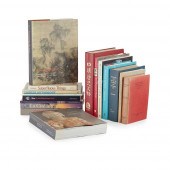 [A PRIVATE SCOTTISH COLLECTION, EDINBURG
[more like this]
[A PRIVATE SCOTTISH COLLECTION, EDINBURG
[more like this]
-
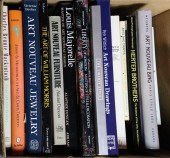 LARGE GROUP OF ART NOUVEAU, JUGENDSTIL,
[more like this]
LARGE GROUP OF ART NOUVEAU, JUGENDSTIL,
[more like this]
-
 ETHEL MAGAFAN (1916-1993) AMERICANEthel
[more like this]
ETHEL MAGAFAN (1916-1993) AMERICANEthel
[more like this]
-
 COLLECTION OF ART REFERENCE BOOKS
ON ASI
[more like this]
COLLECTION OF ART REFERENCE BOOKS
ON ASI
[more like this]
-
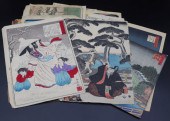 COLLECTION OF (15) JAPANESE PRINTS INC.
[more like this]
COLLECTION OF (15) JAPANESE PRINTS INC.
[more like this]
-
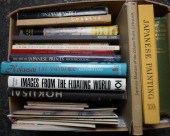 THREE BOXES OF JAPANESE PRINT AND PAINTI
[more like this]
THREE BOXES OF JAPANESE PRINT AND PAINTI
[more like this]
-
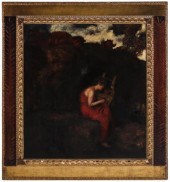 FRANZ STUCK (1863-1928) EXHIBITED OIL ON
[more like this]
FRANZ STUCK (1863-1928) EXHIBITED OIL ON
[more like this]
-
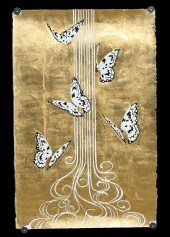 ALENA VAVILINA- BUTTERFLIES #30 W/ GOLD
[more like this]
ALENA VAVILINA- BUTTERFLIES #30 W/ GOLD
[more like this]
-
 CHARLES WILLIAM DAHLGREEN, ILLINOIS, IND
[more like this]
CHARLES WILLIAM DAHLGREEN, ILLINOIS, IND
[more like this]
-
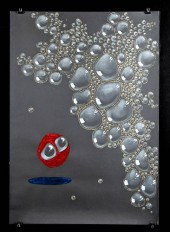 A. VAVILINA MIXED MEDIA W/ GOLD LEAF - B
[more like this]
A. VAVILINA MIXED MEDIA W/ GOLD LEAF - B
[more like this]
-
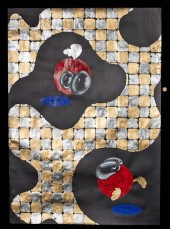 A. VAVILINA MIXED MEDIA W/ GOLD & SILVER
[more like this]
A. VAVILINA MIXED MEDIA W/ GOLD & SILVER
[more like this]
-
 FORD CRULL (AMERICAN, B. 1952) 80" x 100
[more like this]
FORD CRULL (AMERICAN, B. 1952) 80" x 100
[more like this]
There are many more auction results available to our members...





